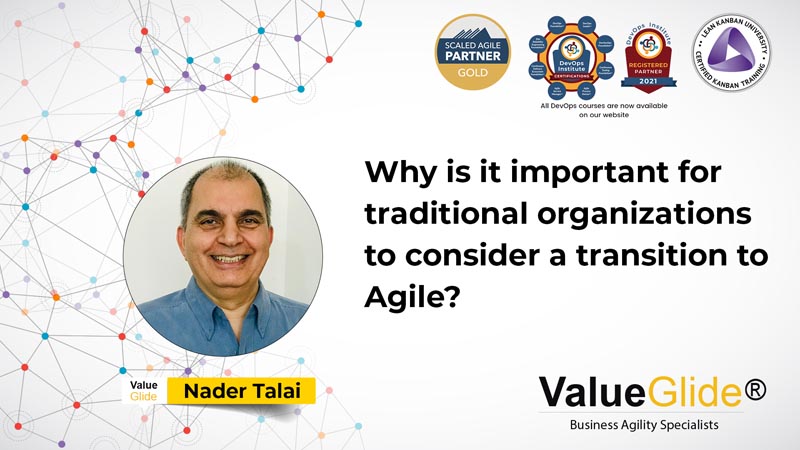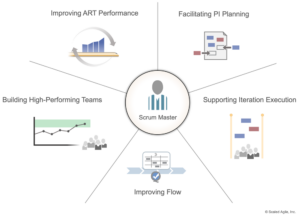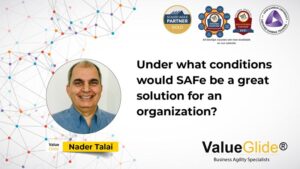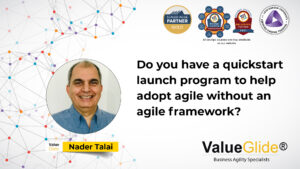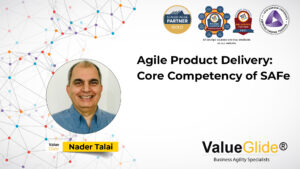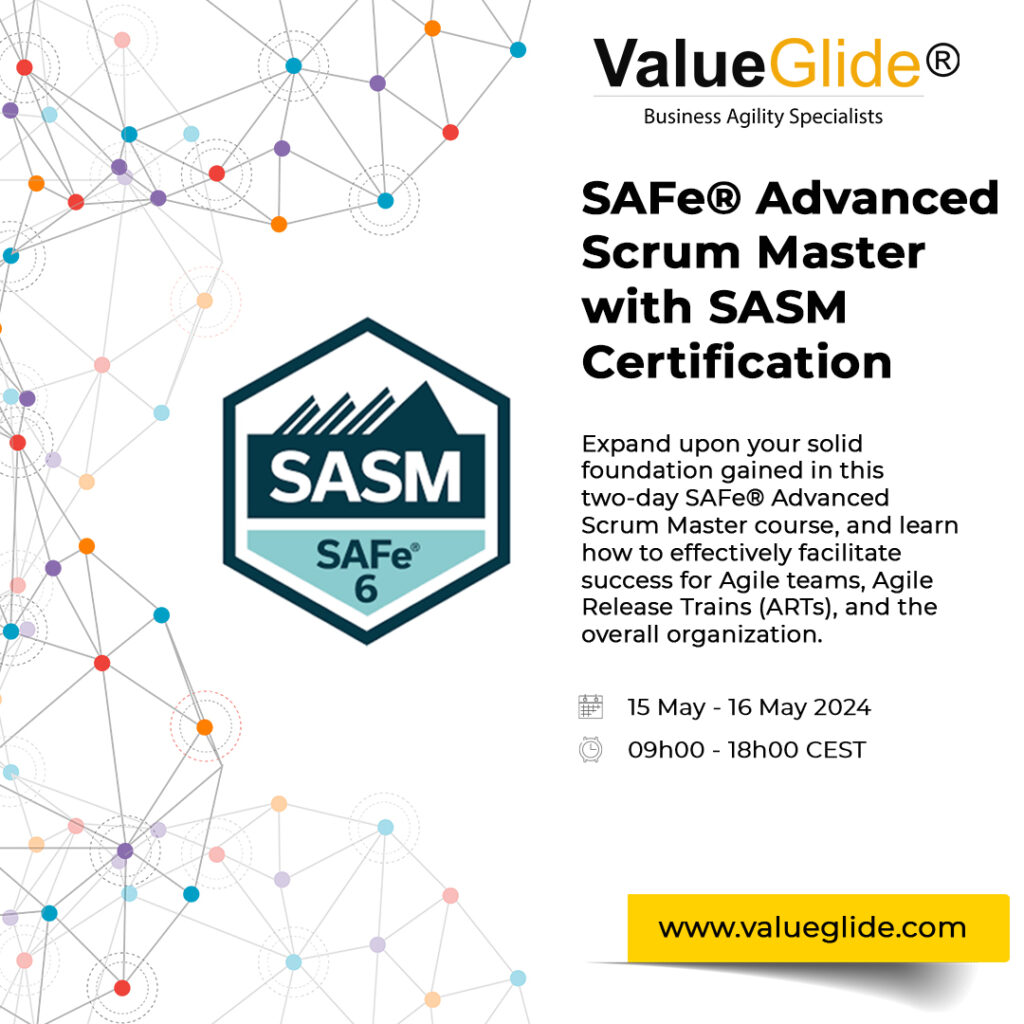Why is it important for organisations to consider the transition to agile?
Agile is a great answer to complexity, problem solving and product development, but it isn’t the answer to every question or problem. So, let’s examine where Agile is a great solution.
Agile, or business agility, is about the organizations capability to respond to market changes, changing customer wants and needs, and disruption from competitors more quickly and effectively.
Agile, a culture of high-performance based on agile values and principles, aligned with a proven Agile framework such as SAFe (Scaled Agile Framework) provides organizations with that opportunity.
If we reduce the time required to get valuable feedback, and we increase the number of feedback loops available to us, we can learn faster and we can adapt faster.
We are also creating a system that empowers us to create products, features and services that truly delight customers and product stakeholders.
Improved time to market, reduced costs of production, and the most effective use of our resources in exchange for the highest returns on our investment means that we align organizational objectives with customer objectives and create value for both entities.
A progressive, agile framework.
Achieving organizational agility is not a linear progression.
Unlike waterfall-style project management, we don’t start at point A and progress to point B and then arrive at a destination, several months or years down the line, that aligns with what we first imagined this would look like.
In Agile, and specifically through the lens of SAFe (Scaled Agile Framework), we know there are certain outcomes that we want to achieve. Goals and objectives that are important to the organization, teams, and individuals within those teams.
We know that there is no clear path to achieving those outcomes, and we also understand that those outcomes and objectives may well change based on what we discover and learn through the process of becoming more agile, and so we need to follow empirical process control to get there.
In other words, we need to be clear and transparent in how we work, we need to inspect frequently, and we need to adapt based on the data and evidence we gather through the process.
This is how agile, or business agility, empowers us to navigate complexity, uncertainty, ambiguity, and volatility.
We form a hypothesis, and we design an experiment that is intended to prove or disprove our hypothesis. We conduct the experiment, gather the data and evidence, and then evaluate that evidence to inform what we should do next.
If we are achieving the outcomes that are valuable to us, we still use the same process because we are deeply invested in continuous improvement and building on a rock-solid foundation of proven success.
If we find that we are not achieving our objectives, we can stop what we are doing and design a new experiment that allows us to discover a new, better way forward than the path we were following.
So, traditional management and project management is built on the idea of rigidly following a plan, based on something we had to guess or estimate up front, and following that plan regardless of what the data or evidence shows us.
The delivery of that project within the specified time frame and cost structure is all that matters.
Agile offers a unique opportunity to capture 80% of the value from 20% of the work, and then make the decision as to whether we want to reallocate those funds to something more valuable than the remaining 20% of the project/product and respond accordingly.
It offers us flexibility, and the opportunity to respond rather than react.
We get to choose what the most valuable investments are, and we get to change our mind if the evidence and data demonstrate that something else offers far greater returns on investment for us.
So, this is one of the primary reasons why organizations are considering a transition to Agile and abandoning the 20th century style of project management and product development.
About Value Glide
Value Glide are a SAFe (Scaled Agile Framework) consultancy, coaching practice, and training specialist who work with organizations to align business objectives with customer needs and wants.
As deeply experienced agile coaches and practitioners, our team are invested in continuous learning through each client engagement and use the data and evidence we gather from each implementation to inform our training, coaching, and consulting services.
In a nutshell, empirical process control or empiricism.
If you are thinking of adopting agile within your organization and have identified SAFe as a great agile framework to adopt, implement and improve your business agility, visit our SAFe Quickstart ART Launch program page or view our SAFe Consulting Services page.
If you have identified a need for an agile coach and SAFe coach to help your organization adopt and implement SAFe, visit our SAFe Coaching Services page.
If you want to know more about SAFe and how to lead SAFe, visit our SAFE Training page for a host of options, from Leading SAFe to a SAFe Release Train Engineer course.
#SAFe #scaledagileframework #scalingagile #agile #agileframework #agilecoach

